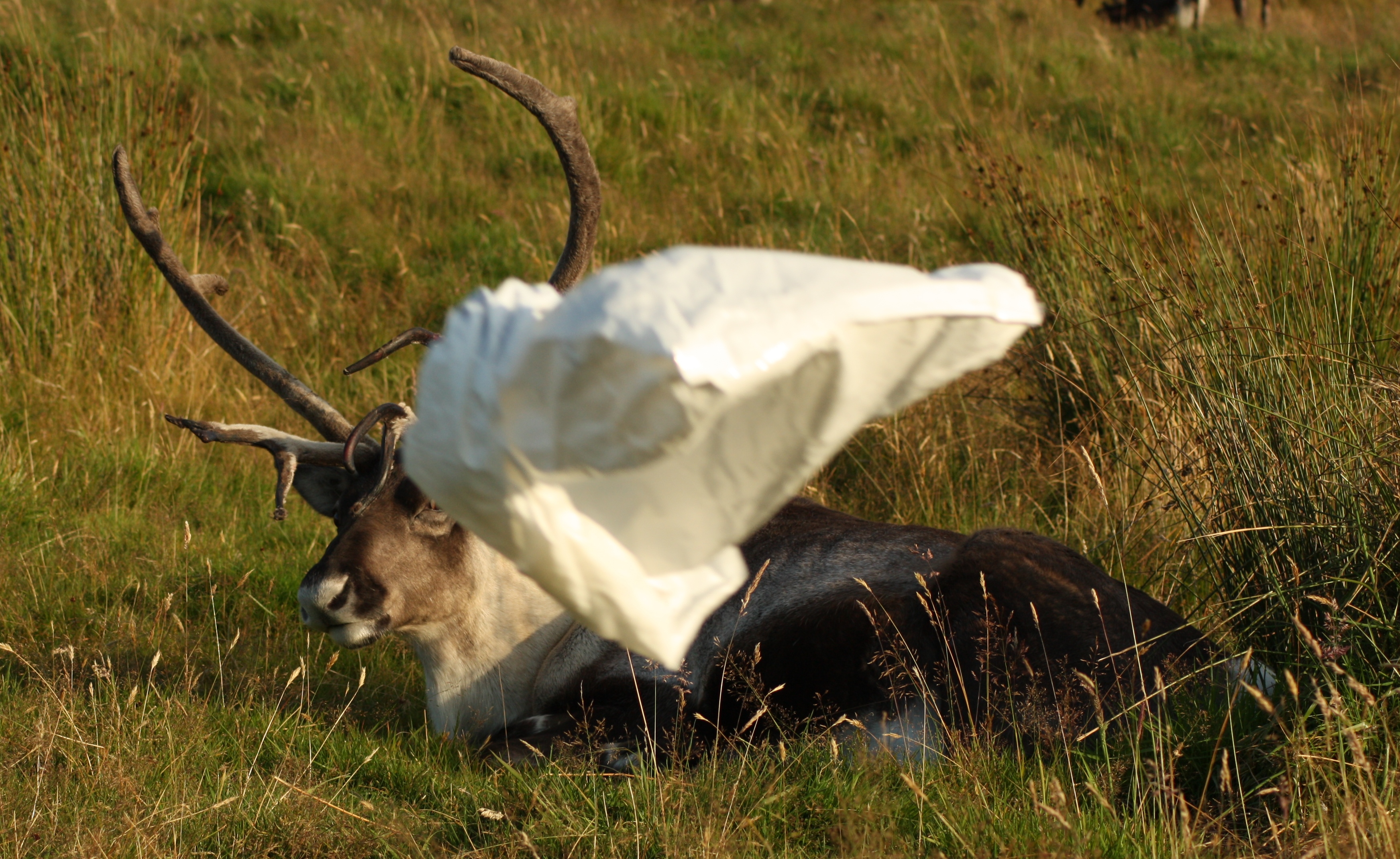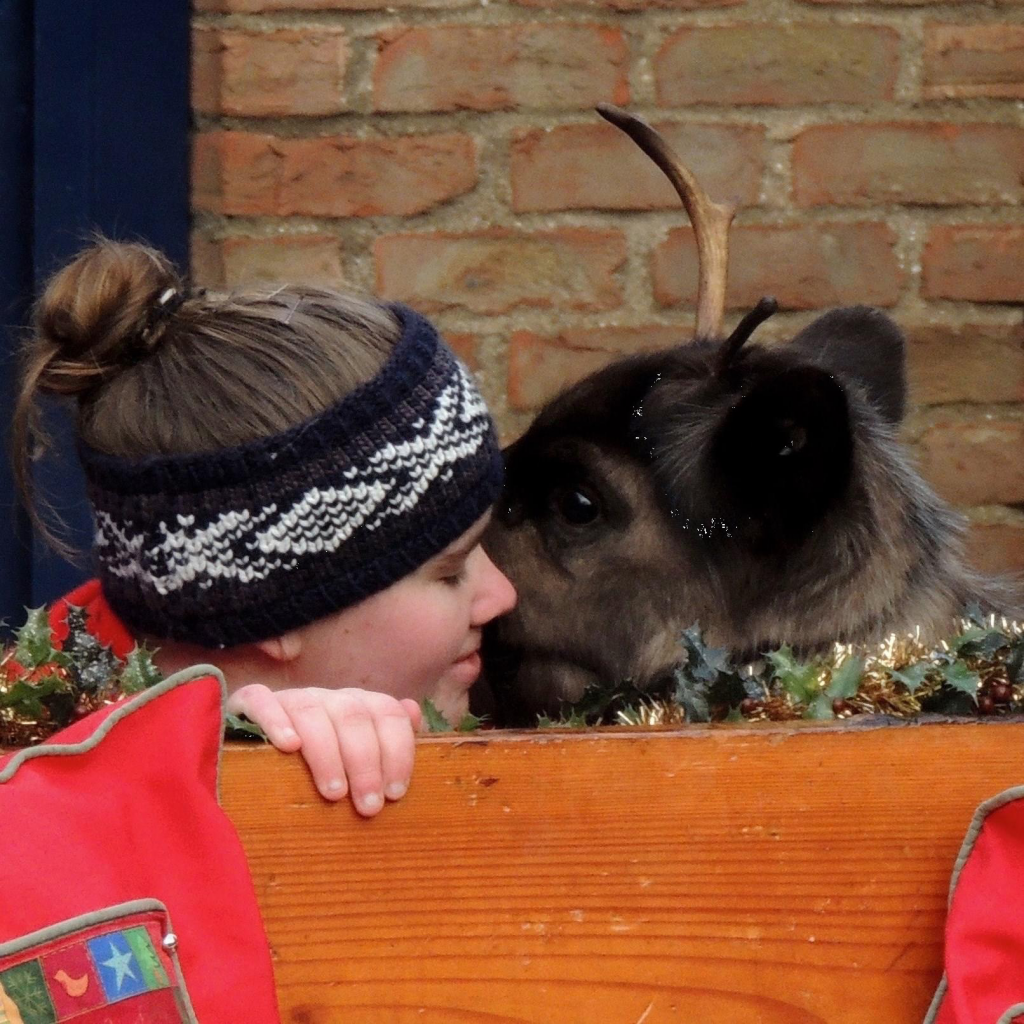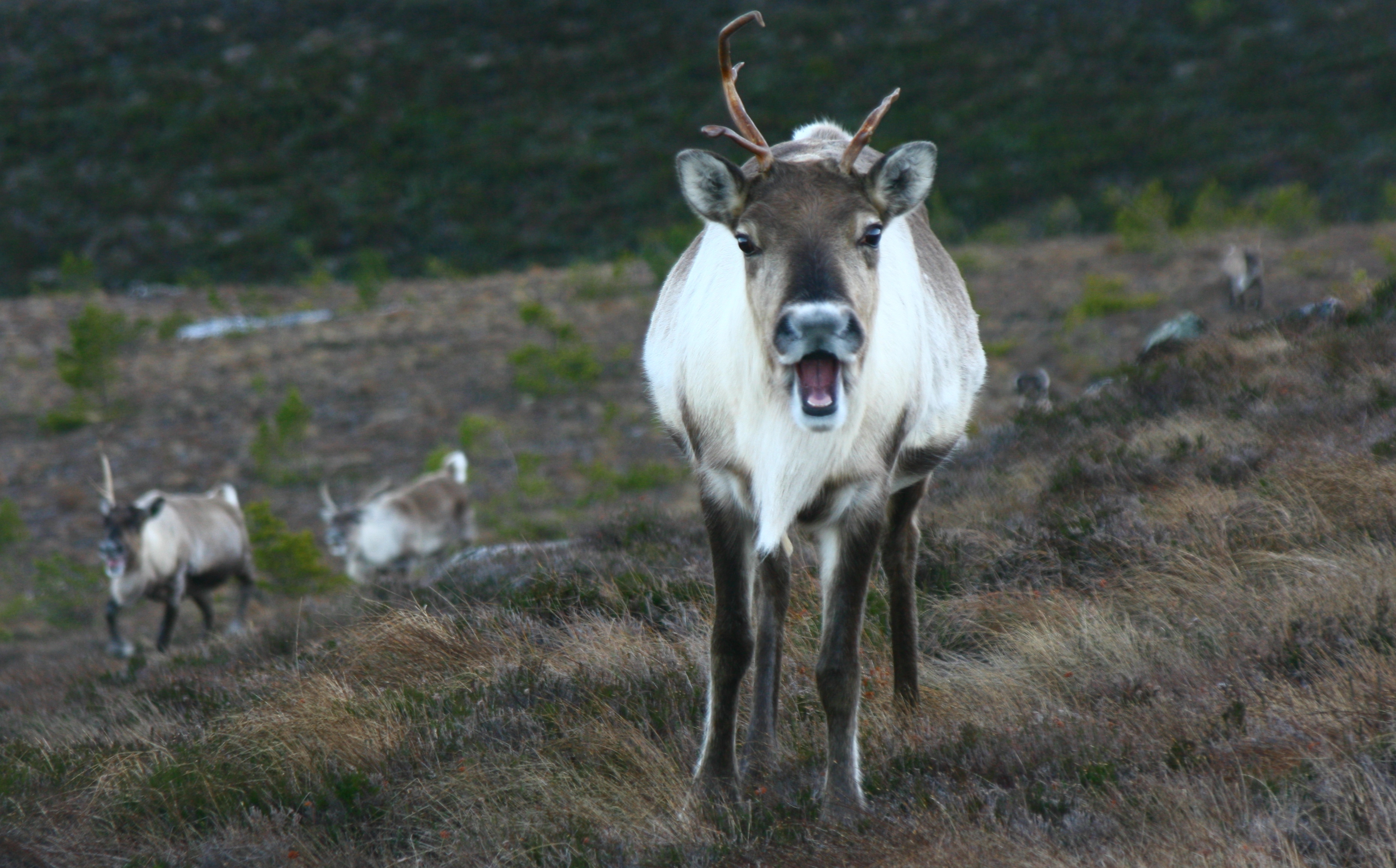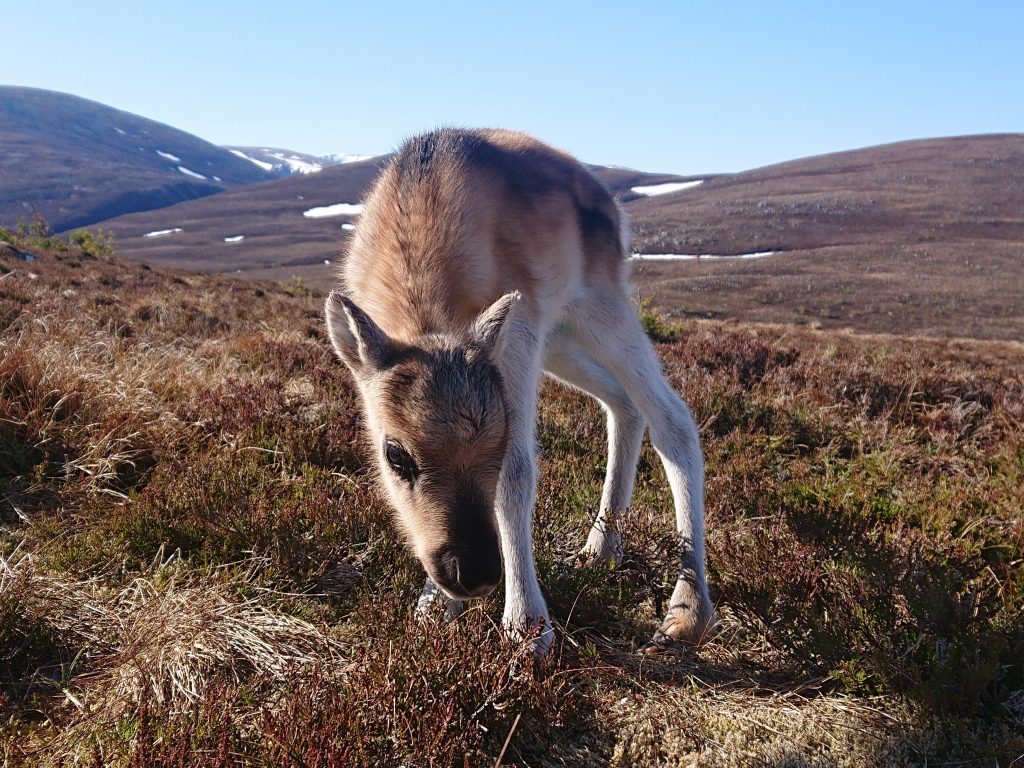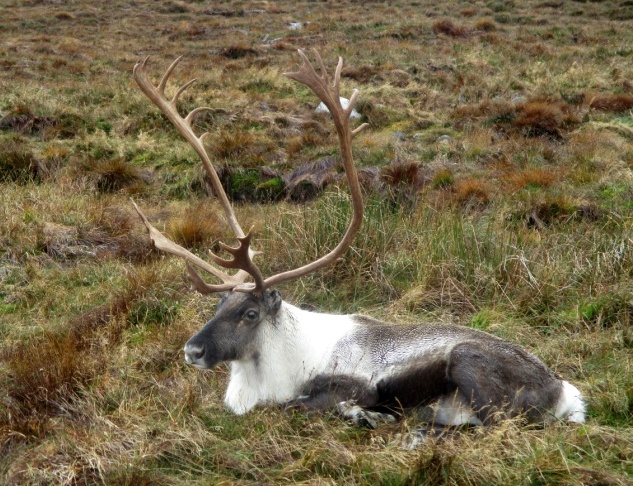Every now and then we like to feature some visitor stories in our blogs. Here’s a couple of stories from long-time reindeer adopters Karen, Steve and Sally 😀
Karen and Steve, Moray: We started to visit the herd on holiday every year in 2011, we loved seeing and feeding the herd. When Blue was a year old, he followed me around on the Hill Trip and I fed him. My son took a wonderful picture of myself stroking his chin which he seemed to love, and I fell in love in an instant! We then adopted him until he sadly died; at the time I was going through breast cancer which hit us hard as I was just recovering from my third surgery at the time. We wanted to adopt a family member of Blue’s so transferred the adoption to LX, his brother, whom we have met once on the Hill Trip and fed! We are so privileged to be adopters and we love these beautiful animals so very much, it fills us with joy when we visit them! When we were adopters of Blue we even had t shirts made with the picture below saying respectively ‘I am Blue’s Mummy/Daddy’ on and wore them proudly when we visited them which gave the herders much laughter. It was very surreal how Blue seemed to bond with me that first day, he seemed to feel my loving energy towards him, and we loved his beautiful white colour (like his father before him) although we learned he was not an albino.

To see how these wonderful people are so devoted to these beautiful and gentle animals is so fantastic, and to see them in their own habitat is even better and extremely important. We took our best friends Esme and Kevin up and they fell in love with the naughty Bond, so for Christmas we adopted him for them! We got the pack, and I wrote a poem in 4 verses or so to see if they worked out what the present was, and Kevin got it after 3 verses! They were very joyful to get this as a Christmas present, and we hope to visit again soon since we now live in the Highlands in Speyside at last!
Sally, Colchester: My encounter with the Cairngorm Reindeer Herd started in August 1998, the day was awful, raining heavily, I remember jumping over deep puddles and running water in the hill enclosure, you can see from the photo I oblivious of the weather condition! Totally enraptured with the two furry noses nuzzling my hand, staring at the gorgeous big deep brown eye and the enormous grin on my face totally besotted! They were extremely greedy and it looks like I’m about to fall over backward but I don’t think I did. I then retuned in 2016 to be a volunteer during my holidays.
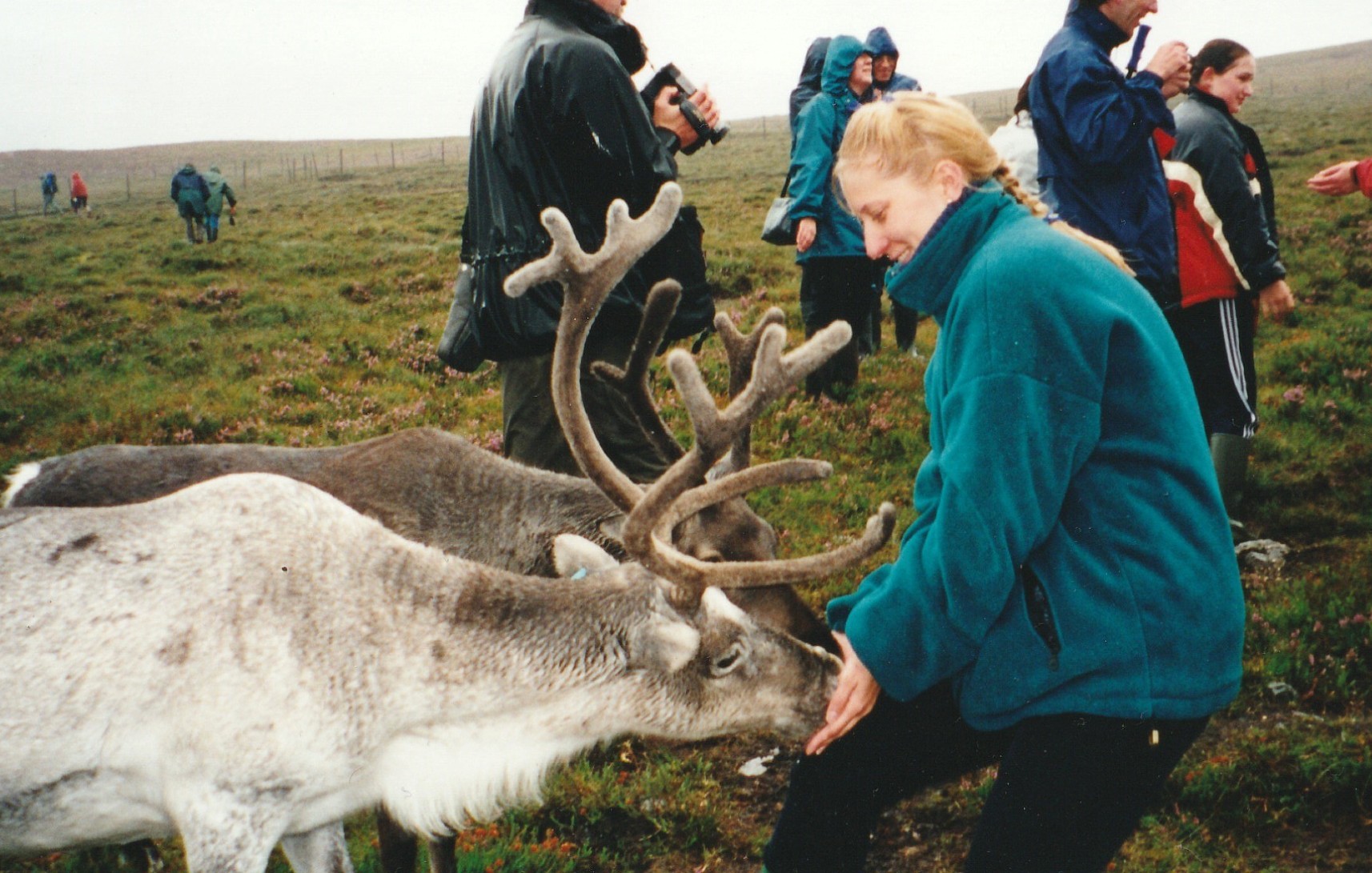
My next encounter wasn’t until 2016, for the second year running I had booked to go on a hill trek but had to cancel for ill health. My friends still went and I was (not very bravely) holding back the tears of disappointment. My friends went off for their adventure and I was left waiting in the shop for them to return (4.5 hours later). An angel called Tilly then asked a herder to take me to the Paddocks and show me the reindeer there and show me what jobs are completed throughout the day. Best 4.5 hours of my life!
I have since returned a few years running as a volunteer during my holidays. My favourite time is either the afternoon I spent in the hill enclosure picking up poo, bags and bags of it, or showing a child how to feed the reindeer – they’re nervous to start with but have the biggest grin on their faces once they’ve managed it, then there’s no stopping them, or talking to visitors in the Paddock. My absolute happy place is sitting amongst the reindeer after a Hill Trip, the reindeer lay down and digest their food, I’m so close amongst, everything is quiet and peaceful, the reindeer adorable, the scenery amazing and the fresh air so clean.












